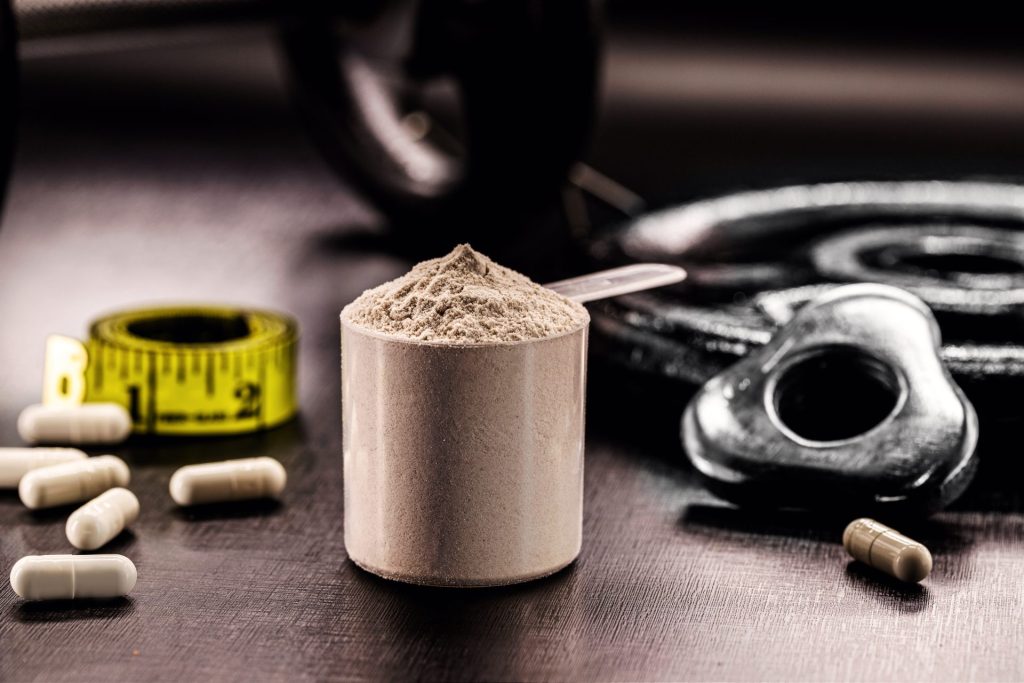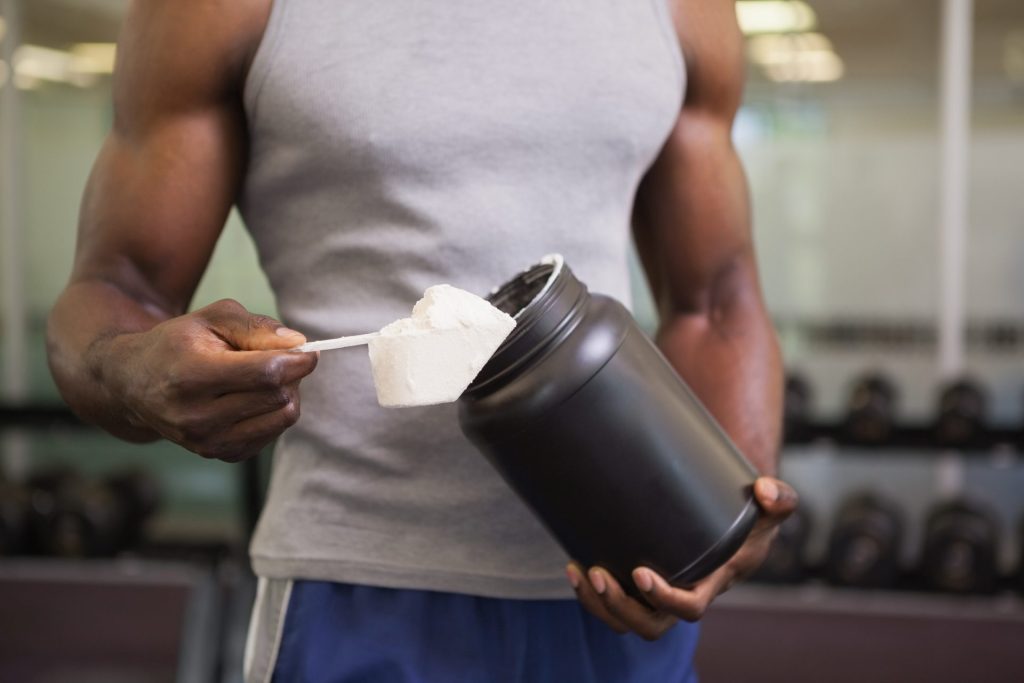Are you looking for a delicious, convenient way to fuel your muscles and support muscle growth while also achieving your bodybuilding goals? Whey protein is the answer!
Whey protein is an excellent source of high-quality, complete protein that can help amplify your workout results. This protein powder packs a punch for branched-chain amino acids (BCAAs) – essential building blocks for muscle development, repair, and maintenance. Plus, whey protein provides vital minerals like calcium and phosphorus for muscle function.
So if you’re serious about maximizing your gains, consider taking whey protein as part of your diet plan.
BUT WHAT EXACTLY IS THE BEST TIME TO TAKE WHEY PROTEIN? THAT’S WHAT WE’LL BE DISCUSSING TODAY – LET’S DIVE IN!
Contents
Exploring The Three Types Of Whey Protein
Not all whey proteins are created equal; three main types are available on the market today, each with its unique benefits. Let’s explore them in more detail.
Concentrate Whey Protein
The first type of whey protein is called concentrate. It has a relatively low percentage of fat and lactose, though it does contain some carbs depending on how it’s processed. This type of whey protein typically contains around 70-80% protein per serving, making it great for those looking to gain muscle size or strength quickly.
Concentrate whey protein also provides an easy way to increase your daily calorie intake without adding too much bulk to your diet.
Isolate Whey Protein
The second type is isolate whey protein, which is made by filtering out most fat and lactose during processing. As a result, this type of whey contains about 90-95% protein per serving, making it a great choice for those looking to lose weight or maintain lean muscle mass while cutting calories from their diet.
Isolate whey also tends to be easier to digest than other forms due to its lack of fatty components, so it may also be beneficial for those with sensitive digestive systems.
Hydrolysate Whey Protein
Finally, hydrolysate whey protein is made by breaking down the proteins into smaller pieces through a process called “hydrolysis” (hence the name). This makes hydrolysate whey easier for your body to absorb and digest than other forms, making it ideal for post-workout recovery or pre-workout energy boosts.
Hydrolysate also tends to have a higher concentration of branched-chain amino acids (BCAAs), essential for building muscle and aiding recovery after intense training sessions.
Timing Matters: When Is The Right Time To Take Whey Protein?
The timing of when you take whey protein matters because your body needs nutrients at different times during the day. Taking too much or taking it at the wrong time can be counterproductive and cause digestive problems. Generally speaking, the best times to take whey protein are:
- Right after a workout
- In the morning
- Or before bedtime
Each of these times offers its benefits, so let’s go over each in detail.
After Your Workout
Taking whey protein right after a workout is ideal because your muscles need fuel after they have been worked out. This helps them recover faster and start rebuilding themselves stronger than before.
Additionally, since you’ve depleted your energy reserves during exercise, taking some whey protein immediately afterward provides an energy boost that will help replenish what has been used up during exercise. This will help keep your energy levels high throughout the day and prevent fatigue from setting in too soon.
In The Morning
Another great time to take whey protein is on an empty stomach before breakfast in the morning. This is beneficial because it helps jump-start your metabolism to have energy throughout the day and not feel sluggish or tired later in the afternoon.
Additionally, this helps give your body a source of nourishment first thing in the morning, which can help regulate hunger hormones like ghrelin and leptin throughout the day.
As such, it can be helpful if you’re trying to maintain or lose weight by regulating how hungry you feel throughout the day and preventing overeating later at night or during meals.
Before Bedtime
Finally, taking some whey protein just before bedtime can be beneficial as well since this helps replenish any lost nutrients while sleeping and provides a steady source of nourishment while resting that won’t disrupt sleep patterns like eating before bed could do if done too close to going to sleep (i.e., within an hour).
Additionally, this helps prevent muscle catabolism (breakdown) which can occur when fasting for extended periods, such as overnight while sleeping without having eaten anything beforehand due to no incoming nutrients being available for use by our bodies until breakfast hours later upon waking up again!
How To Determine The Right Amount Of Whey Protein For You
Your Fitness Goals
The first step in determining how much whey protein you have is to identify your fitness goals.
ARE YOU TRYING TO BUILD MUSCLE OR LOSE FAT?
YOUR FITNESS GOALS WILL DETERMINE HOW MUCH PROTEIN YOU NEED DAILY AND THE TYPE OF SUPPLEMENT THAT’S BEST FOR YOU.
For example, if you’re looking to build muscle, then it’s best to choose a whey concentrate or isolate over a vegan blend. On the other hand, if your goal is weight loss, then a vegan blend may be more beneficial for helping reduce fat while still providing essential amino acids for muscle growth and repair.
Your Diet
Another factor to consider is what kind of diet you follow. If you’re following a high-protein diet, it’s best to increase your whey protein intake accordingly; however, if you prefer a low-carb or plant-based diet, then it’s important to adjust your consumption accordingly.
For example, vegans looking for an alternative source of protein may opt for a vegan blend instead of traditional whey concentrate or isolate powders since they typically contain no animal products.
PEOPLE WITH ALLERGIES OR SPECIFIC DIETARY RESTRICTIONS SHOULD ALWAYS CONSULT THEIR DOCTOR BEFORE TAKING ANY NEW SUPPLEMENT.
Your Metabolism
The last factor that will affect how much whey protein is right for you is your metabolism. People have different metabolic rates, so it’s important to consider this when deciding how much whey protein is right for you.
Those with faster metabolisms may need more than those with slower ones since they burn through nutrients quicker and need more energy throughout the day to stay balanced and energized from their workouts and regular activities.
Additionally, suppose someone has recently changed their diet (such as going from vegetarian/vegan/gluten-free). In that case, they may also require more supplementation due to changes in nutrient absorption rates based on specific diets like these.
How Much Whey Protein Should I Take?
It’s important to note that these guidelines refer to total daily intake rather than one single serving size; therefore, the right serving size for you will depend on how often you plan on taking your whey protein throughout the day and your goals.
- For example, if you want to build muscle mass, then it’s recommended that you split your daily intake into four servings taken before and after workouts as well as between meals throughout the day; each serving should contain between 20-30 grams of whey protein depending on your needs as outlined above.
- If you’re looking for general health benefits, then one 25-gram serving with breakfast or lunch can suffice for some people. However, others may need to take smaller servings multiple times throughout the day to get their required amount of protein without feeling overly full or bloated afterward!
- If you are sedentary, you will need less protein than active. The recommended daily protein intake for sedentary adults is 0.36 grams per pound of body weight. For active adults, the recommended intake is 0.54-0.64 grams per pound of body weight.
- Your age also affects how much protein you need. Adults over 50 need less protein than younger adults, as they tend to have a lower muscle mass and a higher risk of sarcopenia (age-related muscle loss). The recommended intake for adults over 50 is 0.45-0.68 grams per pound of body weight.
Conclusion
Ultimately, taking protein can be a great way to support your fitness goals and help you reach the body of your dreams. Whey protein is an important part of any healthy diet as it helps build muscle mass, increase energy levels, and improve overall wellness.
BE SURE TO TAKE YOUR PROTEIN AT THE RIGHT TIME OF DAY FOR OPTIMAL ABSORPTION AND BENEFITS.
Taking it after exercise is particularly effective as it helps refuel muscles and restore energy levels. Additionally, consider researching other types of proteins that could be incorporated into your diet for even better results.
The key is finding the best option for your goals and lifestyle to continue building strong muscles and reaching the highest health and performance possible!




